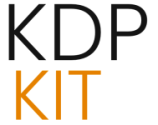The Ultimate Guide to Tracking Your KDP Sales and Royalties

For authors navigating the world of self-publishing through Amazon’s Kindle Direct Publishing (KDP), understanding sales performance and royalty earnings is paramount. While KDP provides its own reporting dashboard, many authors find it insufficient for detailed analysis and strategic decision-making. This comprehensive tutorial explores the best tools and strategies available as of August 20, 2025, to effectively track your KDP sales and royalties, ensuring you have a clear picture of your publishing business’s health and growth.
Understanding KDP’s Native Reporting
Amazon’s KDP platform offers a built-in reporting system that provides essential data for authors. The KDP Reports Dashboard offers a snapshot of daily estimated royalties, sales, and Kindle Edition Normalized Pages (KENP) read. It also allows authors to view and download their top-earning books, formats, and marketplaces. The dashboard is updated frequently, with some data appearing within 24-48 hours of a sale or KENP read. However, authors often seek more granular insights and user-friendly interfaces than KDP’s native reports provide.
Key features of KDP’s native reporting include:
- Dashboard: Provides a daily overview of top-earning books, estimated royalties, orders, and KENP reads, along with top formats and marketplaces. It also includes a 30-day trendline.
- Orders Report: Details processed book orders for all formats and eBooks, allowing comparison of up to 10 books.
- Royalties Estimator: Helps authors estimate upcoming Kindle Unlimited (KU) earnings and total earnings in a single currency, based on pages read and copies sold.
- KENP Read Report: Shows the number of Kindle pages read for specific books, timelines, formats, and marketplaces.
While these reports are a starting point, their limitations in terms of data visualization, historical trend analysis, and cross-platform aggregation lead many authors to seek third-party solutions.
Why Use Third-Party Tools for KDP Sales and Royalty Tracking?
Third-party tools offer several advantages over KDP’s native reporting:
- Enhanced Data Visualization: Many tools provide more intuitive charts and graphs, making it easier to spot trends and patterns in sales and royalties.
- Consolidated Data: For authors publishing across multiple platforms (though this guide focuses on KDP), these tools can consolidate data into a single dashboard.
- Deeper Insights: Some tools offer advanced analytics, such as sales rank analysis, competitor tracking, and keyword performance, which can inform marketing and publishing strategies.
- Time Savings: Automating the process of data collection and analysis frees up authors to focus on writing and marketing.
It’s crucial to note that when using third-party tools, authors should exercise caution regarding data security. As highlighted in some discussions, tools that request Amazon cookies or direct account access can pose security risks. Always opt for reputable tools that prioritize data privacy and security.
Top Tools for Tracking KDP Sales and Royalties (2025)
Several powerful tools have emerged to help KDP authors gain a competitive edge. These tools often focus on different aspects of the publishing process, from keyword research to sales analytics.
1. Publisher Rocket
Publisher Rocket, developed by Dave Chesson, is a comprehensive suite of tools designed to help authors optimize their book’s performance on Amazon. While not solely a sales tracker, its features provide invaluable data that directly impacts sales and royalties.
- Keyword Research: Identifies high-performing keywords with low competition, crucial for book discoverability and sales.
- Category Analysis: Helps authors find the most profitable and least competitive categories on Amazon, increasing the chances of bestseller status.
- Competitor Analysis: Allows authors to spy on competitors’ sales, rankings, and marketing strategies.
- AMS Keyword Feature: Assists in running effective Amazon Ads campaigns, which directly influence sales and royalties.
Publisher Rocket is a one-time purchase, making it a cost-effective investment for serious authors aiming to understand market demand and optimize their book’s visibility. It’s highly regarded for its ability to uncover profitable niches and keywords, directly contributing to increased sales and royalties.
2. BookBeam
BookBeam is an all-in-one software solution for Amazon self-publishers, offering a robust set of tools for research, optimization, and analytics. It stands out for its user-friendly interface and comprehensive data insights.
- Keyword Research Tool: Provides detailed insights into keyword demand and competition, sourced directly from Amazon data.
- Category Explorer: Allows filtering through over 45,000 Amazon book categories to find the best fit for a book.
- Book Tracker: Enables authors to monitor their own books and competitors’ performance over time, including sales, royalties, and keyword rankings.
- Print Royalty Calculator: Helps authors estimate their earnings per book sold at different price points.
- AI Assistant: Offers AI-powered tools for creating book outlines, descriptions, and customer research reports.
BookBeam is praised for its ability to provide unique data not found in other tools and its user-friendly design. It offers a 7-day money-back guarantee, allowing authors to test its capabilities risk-free.
3. Helium 10
While initially designed for Amazon FBA sellers, Helium 10 has become a powerful all-in-one tool for KDP publishers. It offers a vast array of features for keyword research, competitive analysis, listing optimization, and ad management.
- Magnet 2: Generates keyword ideas based on seed terms, providing data on search volume, competition, and relevance.
- Cerebro: A reverse ASIN search tool that helps uncover keywords used by competitors.
- Keyword Tracker: Monitors the performance of chosen keywords over time.
- Adtomic: Manages and optimizes Amazon Ads campaigns, helping authors track ad performance and improve ROI.
Helium 10 is particularly valuable for authors with higher daily sales volumes or those looking for the most comprehensive suite of tools. Its advanced features can significantly increase a book’s visibility and sales.
4. Book Report
Book Report was one of the earlier popular tools designed specifically to address the limitations of KDP’s native reporting. It offers a clean interface for visualizing KDP sales data.
- Real-time Sales Tracking: Provides an easy-to-read dashboard for monitoring revenue and royalties.
- Data Visualization: Presents KDP sales data in a more digestible format than the native reports.
While Book Report primarily focuses on Amazon data, its user-friendly design made it a go-to for many authors. However, KDP’s own reporting has improved, and other tools offer broader functionalities.
5. ScribeCount
ScribeCount is a comprehensive sales tracking service that aggregates data from various platforms, including KDP. It aims to provide authors with a unified view of their sales performance.
- Multi-Platform Tracking: Consolidates sales data from KDP and other major retailers.
- Kindle Unlimited Data: Pulls in data on Kindle Unlimited page reads.
- Sales Organization: Allows sorting by series or custom tags for better data organization.
ScribeCount is noted for its extensive data collection and support for multiple platforms, making it a strong contender for authors who publish “wide.”
6. DS Amazon Quick View
This free Chrome extension is invaluable for quick market analysis directly within Amazon’s search results. It displays key book details, including the Best Seller Rank (BSR), without needing to click into each individual book listing.
- Instant BSR Data: Shows the BSR for books directly in search results, aiding in quick niche assessment.
- Time-Saving: Streamlines the process of identifying popular books and potential niches.
DS Amazon Quick View is an excellent free tool for initial research and understanding market demand at a glance.
7. Book Sales Calculator (TCK Publishing, Jungle Scout)
Several websites offer free book sales calculators that estimate sales based on a book’s Amazon Best Seller Rank (BSR). These tools can provide a rough idea of a book’s daily or monthly sales volume.
- BSR to Sales Estimation: Converts BSR into estimated sales figures.
- Market Trend Analysis: Helps authors understand market trends and competition.
While useful for quick estimates, these calculators provide approximations and should be used in conjunction with more robust analytics tools for accurate tracking.
Leveraging KDP’s Updated Reporting Features
Amazon has been continuously updating its KDP reporting interface. As of 2025, the KDP Reports Dashboard is more robust, offering:
- Mobile-Friendly View: Access reports on smartphones and tablets.
- Royalties Estimator: Provides more accurate royalty estimates, including for Kindle Unlimited.
- New Dashboard: Offers a daily overview of performance metrics, including top-earning books, orders, and KENP reads.
- Improved User Experience: Enhanced data visualization and navigation compared to older versions.
Authors can access these updated reports directly through their KDP account. The ability to compare up to 10 books on a single graph and download reports in Excel format further enhances their utility.
Strategies for Effective Sales and Royalty Tracking
Beyond choosing the right tools, implementing effective strategies is key:
- Regular Monitoring: Schedule time daily or weekly to review your sales and royalty reports. Consistency is crucial for identifying trends and making timely adjustments.
- Set Clear Goals: Define specific, measurable, achievable, relevant, and time-bound (SMART) goals for sales, royalties, and KENP reads.
- Analyze Key Metrics: Focus on metrics beyond just total sales, such as sales rank, KENP reads, conversion rates, and advertising performance (if applicable).
- Understand Royalty Structures: Be aware of the different royalty options (e.g., 35% vs. 70% for eBooks) and how factors like pricing and marketplace affect your earnings.
- Track Marketing Efforts: Correlate sales spikes or dips with your marketing activities, such as Amazon Ads campaigns, promotions, or external marketing efforts.
- Competitor Benchmarking: Use tools to understand how your books are performing relative to competitors in similar genres or niches.
The Future of KDP Sales Tracking
As the self-publishing landscape continues to evolve, we can anticipate further advancements in data analytics and reporting tools. The integration of AI in sales forecasting, more sophisticated competitor analysis, and enhanced cross-platform aggregation are likely trends. Authors who stay informed about these developments and leverage the best available tools will be best positioned for sustained success on Amazon KDP.
By diligently tracking your sales and royalties using a combination of KDP’s native reports and powerful third-party tools, you can gain critical insights into your publishing business, optimize your strategies, and ultimately drive greater success.




